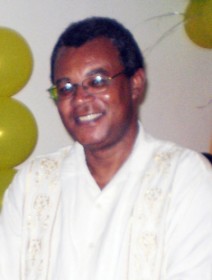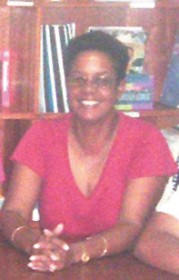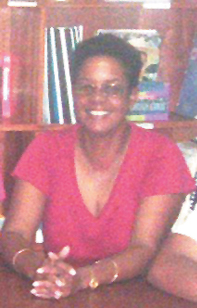By Tamica Garnett
Not many of Guyana’s sporting associations know with certainty their strategies for next year, but the Guyana Amateur Swimming Association (GASA) can boast of a well-laid plan for not only the upcoming year but for the next five years.
 The GASA Friday night outlined a strategic plan of the association’s direction for the next five years.
The GASA Friday night outlined a strategic plan of the association’s direction for the next five years.
President of the association, Phillip Walcott, presented the insightful delineation following a brief account of the association’s 2009 stewardship delivered by association’s secretary, Dr Karen Pilgrim.
In her account Pilgrim highlighted the highs and lows of GASA’s performance last year noting that while not much ensued for the association in terms of sponsorship and fundraising the association was able to produce great yields relative to their input.
Pilgrim said that the major challenge for the association remains gaining adequate training time for the swimmers. The association currently utilizes the state-owned Colgrain Swimming Pool and are only extended the morning hours to carry out their practice sessions.
With most of the swimmers attending school the swimmers are only able to put in one hour of practice time before they run off to their daily routine of school preparations.
Last year the association held four local meets, where their athletes broke 66 prevailing records, 43 by the females and 23 by the males.

Regionally they had swimmers participating in the Inter Guiana Games and the Goodwill Games held in Barbados where, due to financial constraints, they were only able to send 16 participants of the 40 needed to compile a full team, while they scraped to send a lone swimmer Niall Roberts to the CARIFTA Games.
In addition, through the sponsorship from the International Swimming Federation (FINA) four swimmers were sent to Rome to compete in the World Championships.
The ongoing construction of a swimming pool in Sophia was also discussed as Pilgrim stated the association hopes that the promised August deadline will be met.
Walcott discussed the issues of the GASA’s strategic plan for the years 2010 through to 2015. The plan, he stated, was vdeveloped from the association’s need for a comprehensive and effective approach to the expansion of swimming in Guyana.
Originating since 2003 the five-year plan was compiled with the consultation of not only the association’s leaders but stakeholders and club representatives as well.
With the implementation of this plan, GASA is hoping to become the leading body in the pursuit of excellence in the promotion and advancement of aquatic sports in the Caribbean and South America.
“I say aquatic sport because we want to include a host of sports not just swimming, other aquatic sports such as diving, water polo, open water swimming and synchronized swimming,” Walcott elaborated.
He stated that together those involved outlined the guiding principles by which the association should operate in executing its programmes, using these along with a review of the internal and external environment four strategic issues were prioritized.
For each of the four issues, goals, strategies and outputs were set to form the base for the “Action Plan” developed. As with all sporting associations, at the top of the GASA’s list was the expansion of the sport throughout Guyana.
There are currently four operating swimming clubs in Guyana with some 200 affiliated members, and most of the clubs are centralized in Georgetown. The association wishes to expand to 10 clubs spread out across six regions.
They are hoping to carry out this objective largely through the implementation of the sport in schools.
The second issue attacked was the development of the human resources affiliated with the sport. They wish to not only have the provision of a sufficient number of staff at all sporting levels but to be able to adequately reward the officials for their hard work.
The latter is aimed at keeping the officials in the sport. Walcott indicated that in many cases after the officials gained some level of accreditation they would depart for greater tangible incentives outside of Guyana.
He cited that the limitedness of officials in the field was definitely a minus for the association, stating that the sport was in need of a stronger pool of officials.
Improving the performance of swimmers was next on the agenda. The president stated that Guyana was yet to produce a “flagship athlete” that performed well on the international stage but stated that now was as good a time as any for them to make a start.
“Ultimately we have to start somewhere, Suriname has already made it on the world stage. And we need to start producing winners because people like to sponsor winners,” Walcott stated.
He stated that it all came right back to the practice time that the swimmers were allotted, citing that when compared to other countries Guyana was lagging behind since those swimmers put in some three hours a day of training. Nevertheless with the completion of the new swimming pool in Sophia the association hopes to rectify this situation.
The last issue discussed was the enhancing of the association’s managerial capabilities, while the association is looking forward to strengthening it’s bond with the ministries and other organizations the GASA wished to establish it’s independence as an organization.

